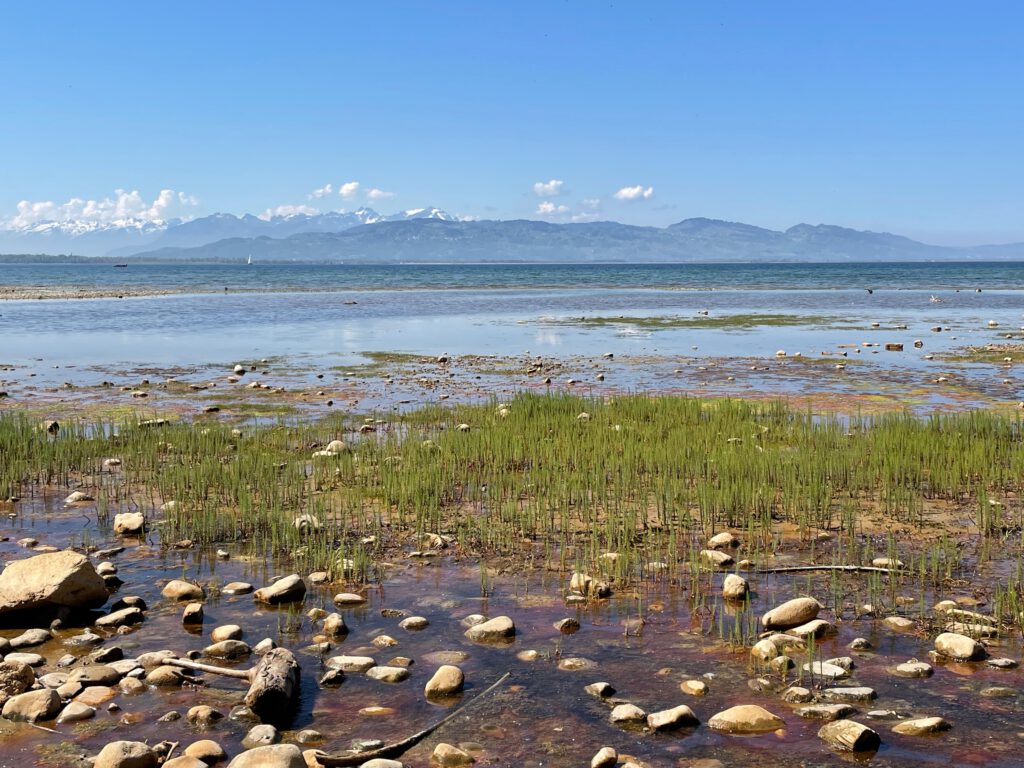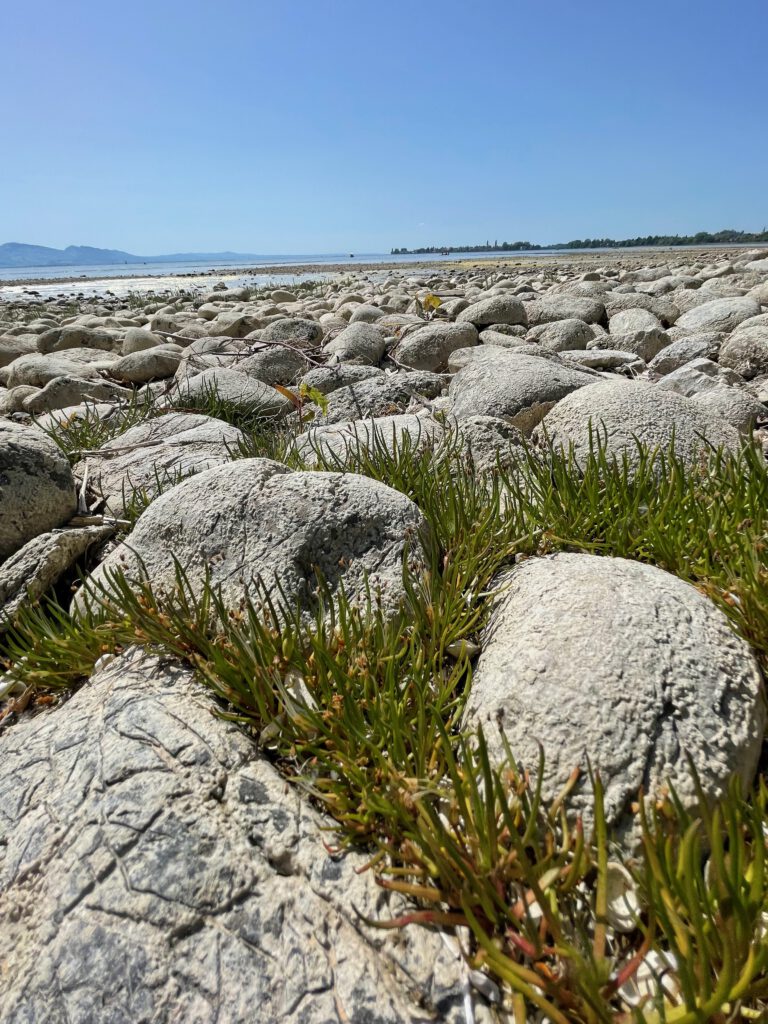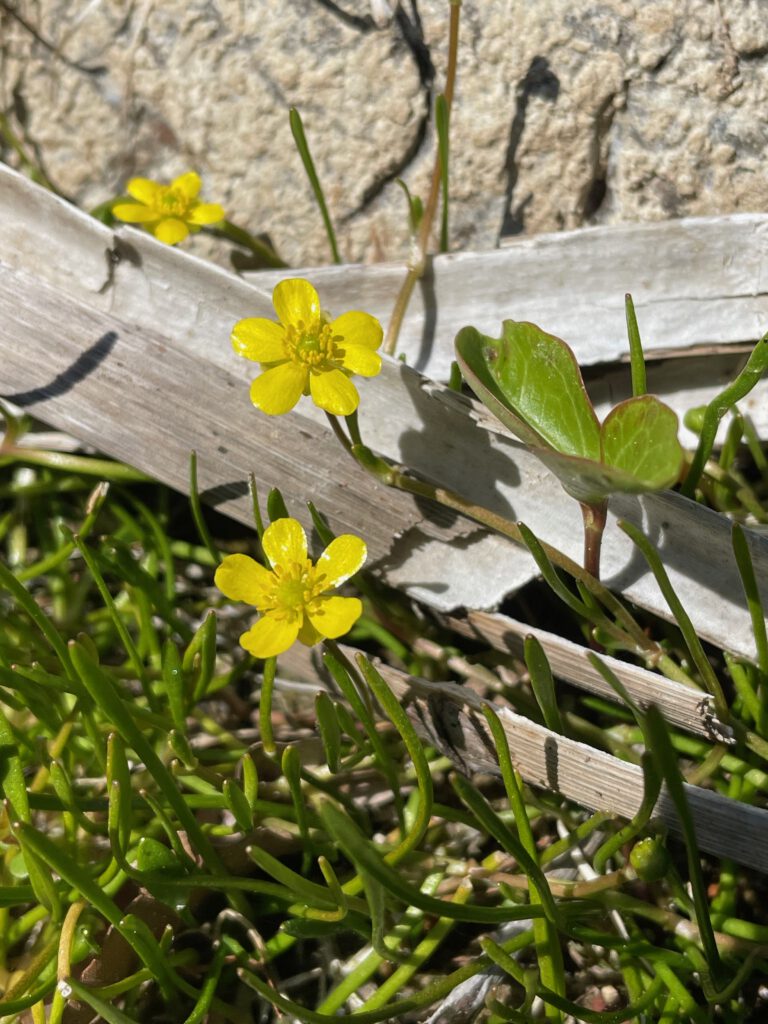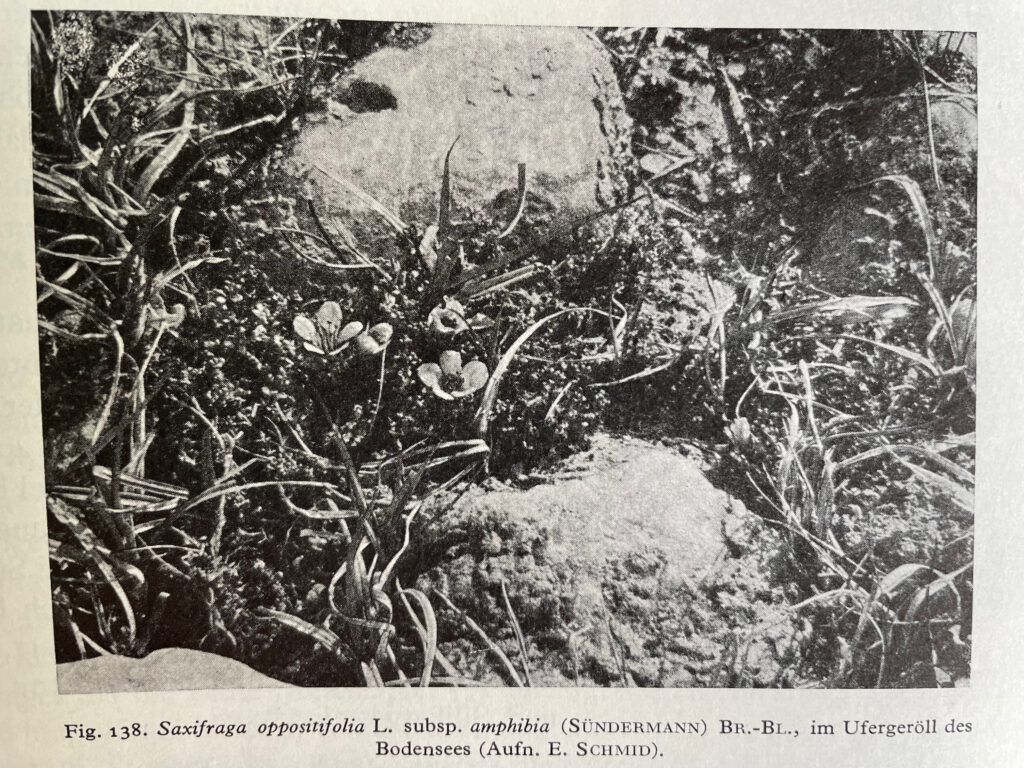End of April in Lindau. The water level is still low on the unregulated Lake Constance, and this year the water level is particularly low. This is due to a lack of precipitation during the winter months. And because the snowmelt is also expected to be minimal, the seasonal rise in the water level is still a while away. This extends the shore grass season. In any case, you can experience this unique plant formation for longer than in other years without getting your feet wet. Its rare plant species are specialized in rushing to flower and bear fruit in the spring. Reproduction must be completed before the plants are flooded by water for several months. The Lake Constance forget-me-not (Myosotis rehsteinern) is the most famous plant of the shore grasslands. Its reason for this is that they are visited by hordes of walkers in the spring.
Vegetation science on beach grasslands
In the 19th and 20th centuries, plant communities that were resistant to summer flooding were recognized as special. At that time, it was discovered that plants grew together on Lake Constance that differed from their more widespread relatives in their growth habit and reproductive behavior. The plant community that extended furthest into the water was described by the botanist Erich Oberdorfer in 1957 as Deschampsietum rhenanae. The name comes from the sweet grass Sea Hair Grass (Deschampsia rhenana), which is known only from Lake Constance. Almost all of the characteristic species of this vegetation are now threatened with extinction.

In fact, botanists have repeatedly regarded it as a variety or subspecies of the marsh forget-me-not. Franz von Hausmann, the author of a flora of Tyrol, who lived in Bolzano, described it in 1854 as Myosotis palustris var. rehsteineri. With this name he was referring to the Swiss botanists Wartmann and Nägeli, who had already used "rehsteineri" as an epithet. Although this has not been found anywhere, it is said to have referred to the Swiss naturalist Johann Konrad Rechsteiner (1797-1858). He is sometimes also spelled "Rehsteiner". If the latter variant is correct, the plant name would actually be correct. The Lake Constance forget-me-not is generally recognized today as a separate species under the name Myosotis rehsteineri Wartm. ex Reut.
Lake Constance Forget-me-not (Myosotis rehsteineri) This forget-me-not still grows around Lake Constance. The largest populations are found on the Swiss side in Thurgau and on the Untersee. Elsewhere, populations have declined sharply. The forget-me-not's flowers have always delighted people. In 1856, the botanist Hausmann praised them as "wonderful carpets," in 1911 Baumann spoke of the "lovely ornamentation of the lake shore," and in 1988 the Bavarian State Office for Environmental Protection even called them the "Blue Mauritius among shore plants." However, the species supposedly remains predominantly sterile and reproduces by runners. This would mean that the flowers are merely for show.
The Lake Constance forget-me-not is closely related to the common marsh forget-me-not (Myosotis scorpioides).
Shoreweed(Littorella uniflora)
The European shoreweed is widespread among the rubble of washed-up rocks near Lindau. Its runners slither from gap to gap. It blooms at the same time as the forget-me-not, but very sparingly, with only one flower on each plant. It is either male or female. This makes the shore weed monoecious, and it only blooms where it is in dry conditions.
Superficial observers might mistake the shore weed for a sweet or sour grass. One would have to bend down quite deeply to realize that this isn't true. The stamens protruding far from the flowers might then suggest a ribwort plantain. And indeed, the shore weed belongs to the plantain family (Plantaginaceae). Its presence enhances Lake Constance for its water quality. The shore weed grows only in very clean, nutrient-poor waters.
Creeping Spearwort (Ranunculus replans))
The creeping spearwort can also tolerate flooding for up to four months a year. Its Latin name is very similar to that of the common creeping buttercup (Ranunculus repens). Sometimes both species occur in neighboring locations. However, the creeping spearwort is much more closely related to the flaming buttercup (Ranunculus flammula). The two are almost indistinguishable by their flowers. However, they have very different growth habits. The creeping spearwort spreads like many a grass or sedge, with arched, ascending shoots that take root at each stem node.
Disappeared characteristic species of beach grasslands
Some characteristic species of the beach grasslands have not survived to the present day. These include a thrift (Armeria maritima spp. purpurea) and a saxifrage. Both are considered Ice Age relics, and since the last Ice Age is long over, it may be quite natural that these species have disappeared from our latitudes.
But at least in the case of the Lake Constance saxifrage (Saxifraga oppositifolia ssp. amphibia) the problem is the destruction of its habitat, which has even been very precisely documented. Franz Sündermann (1864-1946), a gardener in Lindau, described the Lake Constance saxifrage in 1909, and it was reclassified again by the botanist Braun-Blanquet. Its current name is Saxifraga oppositifolia subsp. amphibia (Sünd.) Br.-Bl.. This subspecies of the main species, which is otherwise only found in the Alps, is extinct worldwide. It was last found on Lake Constance in 1978. As early as 1909, Sündermann described how the populations near Wasserburg were first restricted and later destroyed by development. In Lindau in 1896 and 1897, he also discovered that the saxifrage's tolerance to flooding had its limits. The authors Megerle (1990) and Bertsch (1941) reported how one of the last populations was destroyed at the Zeppelin landing site in Manzell near Friedrichshafen. The plants fell victim to the crowds who attended the Zeppelin takeoffs and landings between 1900 and 1909.




